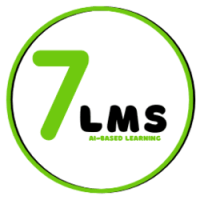
Cultural adaptation for migrant workers is an important topic in today’s global work life. As people move to new countries for jobs, they face many changes. One of the biggest is the new culture. Companies must support workers during this time. Therefore, good adaptation programs help everyone work better and live happier. So, we will explain what cultural adaptation for migrant workers means, why it matters, and how to do it well. Also, we mention how 7LMS can help companies with their training.
What is cultural adaptation for migrant workers?
Cultural adaptation for migrant workers means learning how to live and work in a new culture. Migrant workers may come from very different backgrounds. Because of this, they may not know local customs, languages, or behaviors. This can lead to confusion, stress, or problems at work.
Cultural adaptation helps migrant workers understand how things work in their new country. In addition, it helps them feel like part of the team. Also, they learn how to communicate, how to act, and what to expect.
Why is cultural adaptation important?
When workers feel lost in a new culture, they often feel sad or alone. Moreover, they may have trouble doing their jobs well. Misunderstandings may happen between workers and managers. Therefore, helping workers adapt is good for both the person and the company.
Here are some reasons why cultural adaptation for migrant workers is important:
- Better teamwork: People understand each other more.
- Fewer problems: Workers avoid mistakes caused by cultural differences.
- Higher motivation: Happy workers stay longer and work harder.
- Improved safety: Workers understand the rules better, so accidents happen less.
- Stronger community: Everyone feels included.
Furthermore, when workers adapt well, they become cultural bridges. They help others learn about different ways of life. So, good adaptation is not only smart—it’s necessary.
How to support cultural adaptation
Supporting cultural adaptation for migrant workers takes time and effort. But it’s not hard with the right tools.
Here are some effective ways to do it:
1. Provide language support
Language is key. Without it, communication becomes hard. So, offer language classes or basic guides in multiple languages. Simple videos or online education tools can help with learning quickly.
2. Share local culture and work rules
Explain how local life works. Talk about common habits, holidays, food, and greetings. In addition, teach work rules and rights. Thus, workers can feel safe and respected. Videos, posters, and online training make this step easy.
3. Use visual and digital tools
Not all migrant workers read or write well. Therefore, use images and simple language. Online training is a great solution here. Workers can learn by watching and listening. They can also study at their own pace, which is very helpful.
4. Offer mentorship programs
Pair new workers with a mentor. This person can answer questions and give advice. Such support builds trust and helps adaptation happen faster.
5. Create a friendly environment
Encourage local staff to welcome new workers. Teach them about other cultures, too.
Thus, both sides learn and grow together.
The role of online training in cultural adaptation
Online training makes learning easier and faster. It is flexible, low-cost, and simple to update. Because of this, it is ideal for cultural adaptation for migrant workers.
Through online learning, companies can:
- Offer short and clear lessons.
- Use multiple languages.
- Add videos and audio for better understanding.
- Track progress easily.
Moreover, workers can repeat lessons if they forget something. Since many workers use smartphones, they can learn anytime and anywhere. That is why online education is becoming the best way to train diverse teams.
How 7LMS supports cultural adaptation for migrant workers
7LMS is a smart learning management system that helps companies train workers easily.
It supports cultural adaptation for migrant workers in several ways:
1. Multilingual content
7LMS offers courses in many languages. So, workers understand better from day one.
This reduces stress and increases learning speed.
2. Custom learning paths
Organizations can create different lessons for different groups. For example, new workers from one country can see lessons made just for them. Thus, learning feels more personal and relevant.
3. Mobile access
Most migrant workers use smartphones. 7LMS works perfectly on mobile. Because of this, workers can learn during breaks or after work. It fits their busy lives.
4. Easy progress tracking
Managers can check who completed the training. They can also see which topics are hard for workers. Then, they can give more help where needed.
5. Interactive and engaging lessons
7LMS includes videos, pictures, games, and quizzes. These features make learning fun and easier to remember. Therefore, 7LMS is not just a tool. It is a full solution for successful cultural adaptation.
Final thoughts
To conclude, cultural adaptation for migrant workers is vital for happy workers and healthy companies. It reduces problems, builds trust, and helps teams work well together.
With 7LMS, organizations can support workers in the best way. Start your cultural adaptation journey today. It is the key to a stronger, more inclusive future.
Curious how 7LMS makes inclusive learning a reality? Read the full blog to explore 7LMS, an AI-powered multilingual LMS.
Want to learn more about the team behind 7LMS? Visit https://mysoly.nl/ to discover our mission and digital learning solutions.



